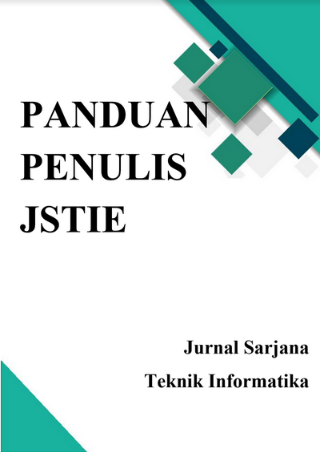PENGEMBANGAN MEDIA PEMBELAJARAN PERANCANGAN MENARA DISTILASI MULTIKOMPONEN BERBASIS MULTIMEDIA
DOI:
https://doi.org/10.12928/jstie.v3i1.2939Abstract
Masalah yang dibahas dalam penelitian ini adalah pengembangan media pembelajaran perancangan menara distilasi multikomponen berbasis multimedia. Materi pembelajaran tersebut berisi proses overall, rectifying, dan stripping yang belum bisa dipahami oleh mahasiswa jika mahasiswa hanya melihat gambar dari proses tersebut. Oleh karena itu, untuk mengatasi kesulitan pemahaman mahasiswa, diperlukan beberapa alternatif penggunaan media pembelajaran. Penelitian serupa telah dilakukan oleh Cito (2013), namun masih terdapat beberapa kekurangan antara lain belum adanya animasi proses yang terjadi di dalam menara distilasi multikomponen dan penggunaan elemen multimedia yang belum maksimal sehingga kebutuhan mahasiswa dan dosen pengampu mata kuliah perancangan alat proses belum terpenuhi. Dengan demikian, yang menjadi tujuan penelitian ini adalah mengembangkan media pembelajaran terdahulu agar dapat memenuhi kebutuhan mahasiswa dan dosen pengampu mata kuliah perancangan alat proses dan interaktif dengan menggunakan beberapa unsur multimedia yang meliputi suara, video, animasi, teks dan gambar.
Pengembangan media pembelajaran ini dikembangkan dengan metode pengembangan sistem multimedia Luther-Sutopo, yang memiliki tahap concept, design, assembly, testing, dan distribution.
Setelah dilakukan ujicoba, didapatkan kesimpulan bahwa media pembelajaran ini telah sesuai kebutuhan mahasiswa dan dosen pengampu mata kuliah perancangan alat proses dan interaktif dengan menggunakan beberapa unsur multimedia yang meliputi suara, video, animasi, teks dan gambar.
Kata kunci: Media pembelajaran multimedia, perancangan menara distilasi multikomponen.
References
. Brownell and Young. 1959. Equipment Design. Calcuta: Wiley Eastern Limited.
. Cito. 2013. Visualisasi Perancangan Menara Distilasi Multikomponen. Skripsi. Yogyakarta: Program Studi Teknik Informatika Universitas Ahmad Dahlan
. Hofstetter, Fred T. (2001). Multimedia Literacy. Third Edition. McGraw-Hill
International Edition, New York.
. M. Suyanto. 2003. Multimedia Alat untuk Meningkatkan Keunggulan Bersaing. Yogyakarta: Andi Offset.
. Munir. 2008. Kurikulum Berbasis Teknologi Informasi dan Komunikasi. Bandung : Alvabeta.
. Santyasa, I Wayan. 2007. Landasan Konseptual Pembelajaran. Makalah. Bali: Universitas Pendidikan Ganesha.
. Sudarman, Danim. 1995.Media Komunikasi Pendidikan. Jakarta : Bumi Aksara.
. Yudha, Eric Gama. 2013. Media Pembelajaran Entity Relationship Diagram Berbasis Multimedia.
Downloads
Published
Issue
Section
License
License and Copyright Agreement
In submitting the manuscript to the journal, the authors certify that:
- They are authorized by their co-authors to enter into these arrangements.
- The work described has not been formally published before, except in the form of an abstract or as part of a published lecture, review, thesis, or overlay journal. Please also carefully read Journal Posting Your Article Policy.
- The work is not under consideration for publication elsewhere.
- The work has been approved by all the author(s) and by the responsible authorities – tacitly or explicitly – of the institutes where the work has been carried out.
- They secure the right to reproduce any material that has already been published or copyrighted elsewhere.
- They agree to the following license and copyright agreement.
Copyright
Authors who publish with Jurnal Sarjana Teknik Informatika agree to the following terms:
- Authors retain copyright and grant the journal right of first publication with the work simultaneously licensed under a Creative Commons Attribution License (CC BY-SA 4.0) that allows others to share the work with an acknowledgement of the work's authorship and initial publication in this journal.
- Authors are able to enter into separate, additional contractual arrangements for the non-exclusive distribution of the journal's published version of the work (e.g., post it to an institutional repository or publish it in a book), with an acknowledgement of its initial publication in this journal.
- Authors are permitted and encouraged to post their work online (e.g., in institutional repositories or on their website) prior to and during the submission process, as it can lead to productive exchanges, as well as earlier and greater citation of published work.







